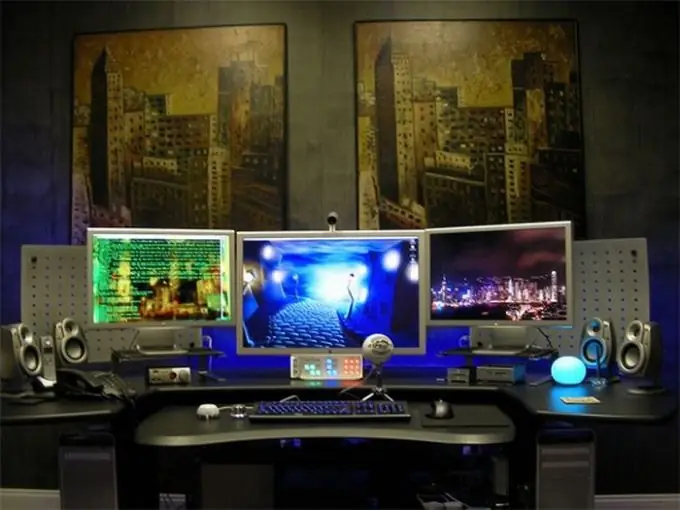It is quite possible to connect two or more monitors to a computer. Thanks to this, you can either expand the working area of the computer, or mirror the image.

Today, personal computer users are increasingly striving to make a kind of "iron monster" out of their own PC. Computers are supplemented with new components, installed various peripheral devices, additional input-output devices, etc. Perhaps, many users have heard that two or more monitors can be connected to one computer, but not everyone dared to do this with their own PC.
What do you need to connect?
In order to connect several monitors to one computer, you need to purchase (if not) a video card that will have two or more outputs. Of course, you need several monitors, which are connected to these outputs. It should be noted that it is highly undesirable to install two video cards on one computer. There can be various kinds of problems related to the compatibility of components, and it is rather difficult to select them in such a way that everything works perfectly.
Connecting monitors
After the monitors are connected to the outputs on the video card, you can turn on the computer. After that, the user may have a small problem related to the fact that the second monitor is not detected. In order to eliminate the impending "threat", you need to go to the "Control Panel". Here you need to select the item "Screen" and go to "Screen resolution", and then click the "Find" button. After the second monitor is connected and synchronized with the computer, you can start choosing the display mode.
For the most part, after connection, the second monitor starts working in a "mirror" mode. In this mode, the second monitor will show exactly the same as the first. Naturally, if this mode suits you, then you can leave everything unchanged. The user can also expand their work area with a second monitor. Thanks to this mode, several users can use the computer at the same time. In addition, a second monitor can be used to expand the viewing angle. This will allow you to have an extended desktop, a larger viewing angle when working with some programs, games, etc. You can switch between modes using the Win + P keyboard shortcut.






